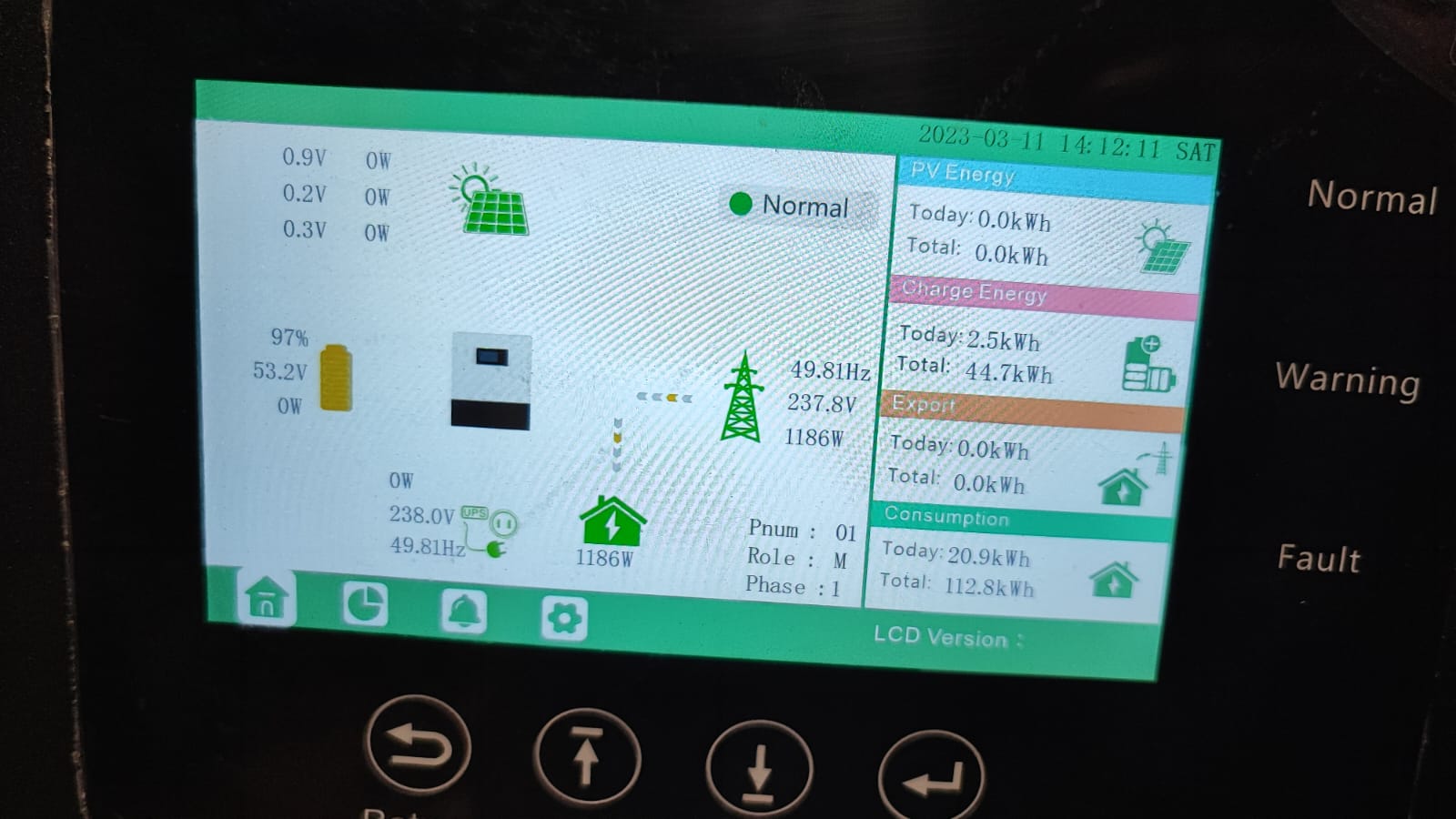eY_b0ss
Official Carbonite Gheylord™
- Joined
- Nov 8, 2014
- Messages
- 2,202
- Reaction score
- 2,632
- Points
- 8,885
- Age
- 34
- Location
- Murrayfield, Pretoria
Hi guys, I need some help.
Recently installed half a solar system (need the solar panels still, no stock).
I have a 12kw Luxpower inverter.
3* 5.12Kwh CFE Batteries.
I've had it for +-4 days now. The battery SOC has fallen from 100% to 97% since then. The installer had them charging from 120A, I have since changed that myself to 60A as stated in battery manual.
The lowest charged they've fallen to since installation was 74%.
Some reason I can't connect to the batteries to monitor them (using wifi), even though they have that ability. The "Smart BESS" app just time's out when you try to connect a battery to it.
I'm afraid my batteries might be losing life, so need to sort this out. PS I am a noob, so any advise would be appreciated.
PS. Powerforum account is waiting validation. You guys are all i have atm xD


Recently installed half a solar system (need the solar panels still, no stock).
I have a 12kw Luxpower inverter.
3* 5.12Kwh CFE Batteries.
I've had it for +-4 days now. The battery SOC has fallen from 100% to 97% since then. The installer had them charging from 120A, I have since changed that myself to 60A as stated in battery manual.
The lowest charged they've fallen to since installation was 74%.
Some reason I can't connect to the batteries to monitor them (using wifi), even though they have that ability. The "Smart BESS" app just time's out when you try to connect a battery to it.
I'm afraid my batteries might be losing life, so need to sort this out. PS I am a noob, so any advise would be appreciated.
PS. Powerforum account is waiting validation. You guys are all i have atm xD








